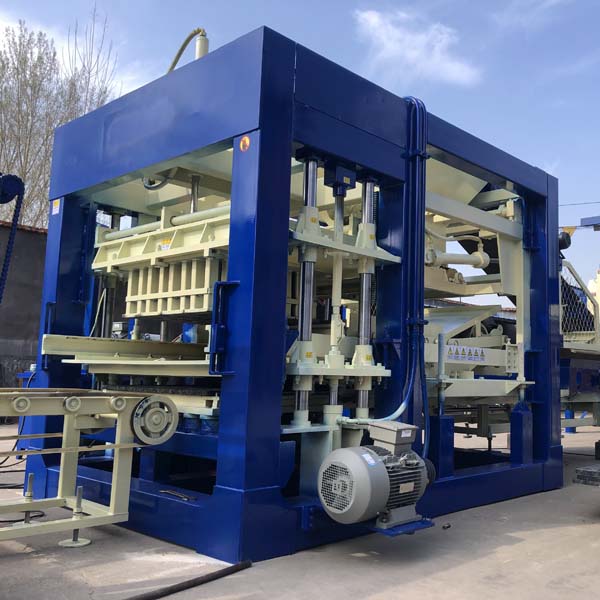
Title: Cost Reduction Strategies in Semi-Automatic Block Manufacturing
Introduction
The construction industry is a cornerstone of economic development, and it heavily relies on the manufacturing of construction materials, such as concrete blocks. The production of concrete blocks involves a variety of processes, and cost reduction is a significant concern for manufacturers. One way to achieve cost savings in block manufacturing is by implementing efficient semi-automatic production methods. In this article, we will explore the cost reduction strategies in semi-automatic block manufacturing, highlighting various techniques and technologies that can help manufacturers streamline their operations and boost profitability.
1. Automating Key Processes
Semi-automatic block manufacturing involves a combination of manual and automated processes. To reduce costs, it’s essential to identify which processes can be fully or partially automated. Automated processes not only increase production efficiency but also minimize labor costs. Here are a few key processes that can be automated:
a. Material Handling: Investing in material handling equipment, such as conveyor belts and forklifts, can help reduce the time and labor required to transport raw materials and finished blocks within the production facility.
b. Mixing and Batching: Implementing automated mixing and batching systems can ensure consistent quality and reduce the need for manual labor in the concrete preparation phase.
c. Block Molding: Semi-automatic block molding machines are available that can streamline the process of forming and demolding blocks. These machines can be operated with minimal labor intervention.
d. Curing and Drying: Using automated curing and drying systems, such as climate-controlled chambers, can speed up the curing process and improve energy efficiency.
e. Packaging and Palletizing: Automation can also be applied to the packaging and palletizing of finished blocks, reducing the need for manual labor and ensuring uniform packaging.
2. Energy-Efficient Equipment
Energy costs are a significant component of manufacturing expenses. To reduce energy costs in semi-automatic block manufacturing, consider the following strategies:
a. Use Energy-Efficient Machinery: Invest in energy-efficient block molding machines, mixers, and other equipment. These machines are designed to consume less energy while maintaining high productivity.
b. Optimize Heating and Cooling: Implement energy-efficient systems for curing and drying blocks. Heat pumps, radiant floor heating, and properly insulated curing chambers can significantly reduce energy consumption.
c. Utilize Renewable Energy: Consider harnessing renewable energy sources such as solar panels or wind turbines to power the manufacturing facility. Over time, these investments can lead to substantial savings on electricity costs.
3. Raw Material Management
Optimizing the management of raw materials is critical for cost reduction in semi-automatic block manufacturing:
a. Bulk Material Purchase: Negotiate bulk material purchase agreements with suppliers to secure cost-effective prices for raw materials like cement, aggregates, and additives.
b. Efficient Inventory Management: Maintain an efficient inventory management system to avoid overstocking or understocking raw materials, which can result in waste or production delays.
c. Waste Minimization: Implement processes to minimize waste during production. Utilize recycling and reusing strategies for materials whenever possible.
4. Workforce Training and Productivity
Even in semi-automatic manufacturing, a skilled and knowledgeable workforce is crucial for efficiency. Consider the following strategies:
a. Continuous Training: Invest in training programs to ensure that your workforce is well-versed in operating and maintaining the semi-automatic machinery.
b. Cross-Training: Cross-train employees to perform multiple tasks within the production process, making the workforce more versatile and adaptable.
c. Performance Incentives: Implement performance-based incentives to motivate employees to increase their productivity and reduce the chances of errors or downtime.
5. Quality Control and Process Optimization
Maintaining high-quality standards and optimizing production processes are vital for cost reduction:
a. Implement Quality Control Measures: Ensure that you have robust quality control processes in place to minimize defects and product rejections, which can be costly.
b. Process Optimization: Regularly review and optimize the production process to identify and eliminate inefficiencies, bottlenecks, and sources of waste.
6. Data-Driven Decision Making
Utilize data analytics and monitoring systems to make informed decisions about production, maintenance, and resource allocation:
a. Real-Time Monitoring: Install sensors and monitoring systems that provide real-time data on equipment performance, energy usage, and production metrics.
b. Predictive Maintenance: Implement predictive maintenance programs to identify and address equipment issues before they lead to costly breakdowns.
c. Demand Forecasting: Use historical data and market trends to forecast demand accurately and adjust production schedules accordingly, preventing overproduction or underproduction.
7. Lean Manufacturing Principles
Incorporating lean manufacturing principles can lead to significant cost reductions:
a. Just-In-Time (JIT) Manufacturing: Implement JIT strategies to reduce inventory holding costs and minimize waste.
b. 5S Methodology: Apply the 5S methodology (Sort, Set in order, Shine, Standardize, Sustain) to improve workplace organization and efficiency.
c. Value Stream Mapping: Analyze the entire production process to identify areas for improvement and streamline workflows.
Conclusion
Cost reduction strategies in semi-automatic block manufacturing are essential for staying competitive in the construction materials market. By automating key processes, implementing energy-efficient equipment, optimizing raw material management, investing in workforce training, maintaining quality standards, and adopting data-driven decision-making, manufacturers can enhance efficiency, reduce waste, and ultimately improve profitability. Implementing these strategies requires an initial investment but can lead to long-term savings and sustainability in the block manufacturing industry.
